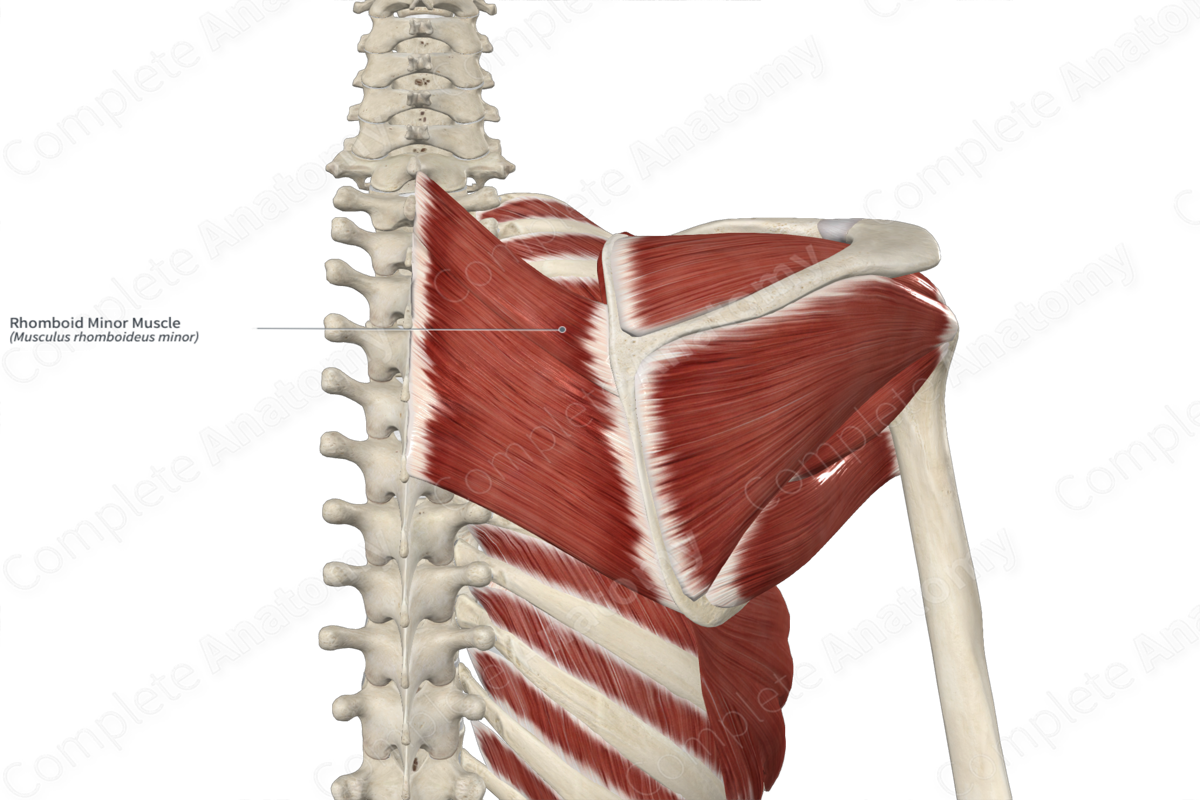
Quick Facts
Origin: Nuchal ligament and spinous processes of C7-T1 vertebrae.
Insertion: Medial border of scapula adjacent to spine of scapula.
Action: Retracts and downwardly rotates pectoral (shoulder) girdle at acromioclavicular and sternoclavicular joints.
Innervation: Dorsal scapular nerve (C4-C5).
Arterial Supply: Dorsal scapular artery, dorsal branches of upper posterior intercostal arteries.
Origin
The rhomboid minor muscle originates from the:
- inferior end of the nuchal ligament;
- spinous processes of the seventh cervical and first thoracic vertebrae.
Insertion
The fibers of the rhomboid minor muscle travel inferolaterally and insert onto the portion of the medial border of the scapula that lies adjacent to the spine of the scapula.
Key Features & Anatomical Relations
The rhomboid minor muscle is an extrinsic muscle of the back and is found in the upper back region. It is a narrow, quadrilateral type of skeletal muscle.
It is located:
- posterior (superficial) to the serratus posterior superior muscle and the dorsal scapular nerve;
- anterior (deep) to the trapezius muscle and the accessory nerve;
- medial to the scapula and the supraspinatus and levator scapulae muscles;
- superior to the rhomboid major muscle.
Actions & Testing
The rhomboid minor muscle is involved in multiple actions:
- retracts the pectoral (shoulder) girdle at the acromioclavicular and sternoclavicular joints;
- downwardly rotates the pectoral girdle at the acromioclavicular and sternoclavicular joints;
- helps stabilize the scapula against the thoracic wall.
The rhomboid minor muscle can be tested by holding the hand on the posterior aspect of the hip, then pushing the elbow backwards against resistance, during which the muscle can be palpated (Moore, Dalley and Agur, 2009).
References
Moore, K. L., Dalley, A. F. and Agur, A. M. R. (2009) Clinically Oriented Anatomy. Lippincott Williams & Wilkins.
Learn more about this topic from other Elsevier products





